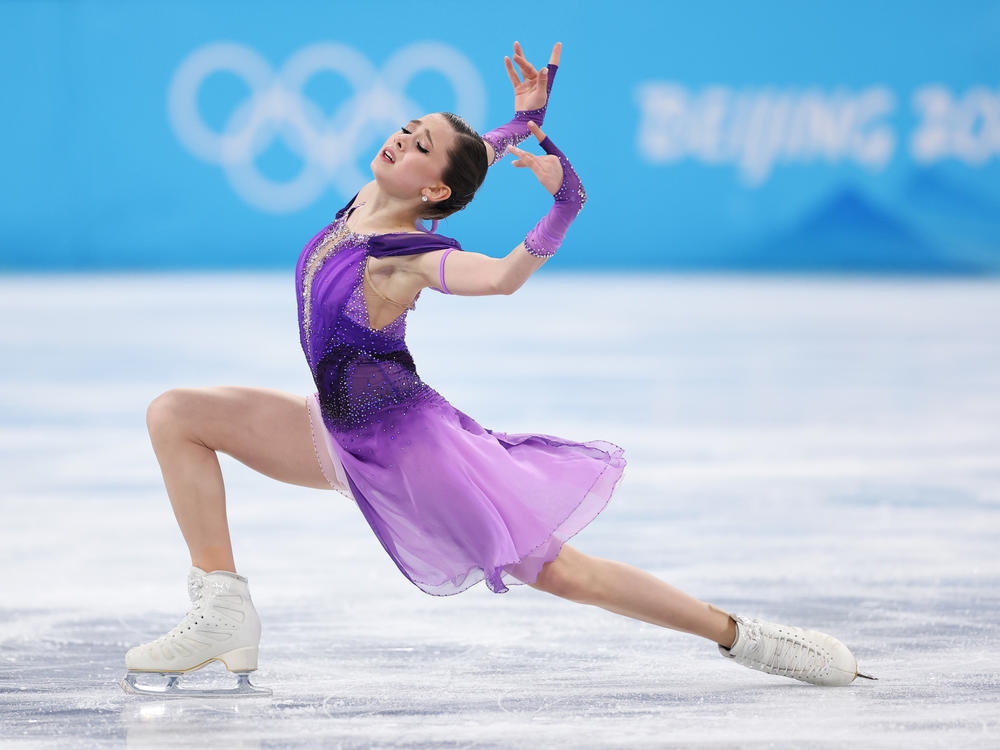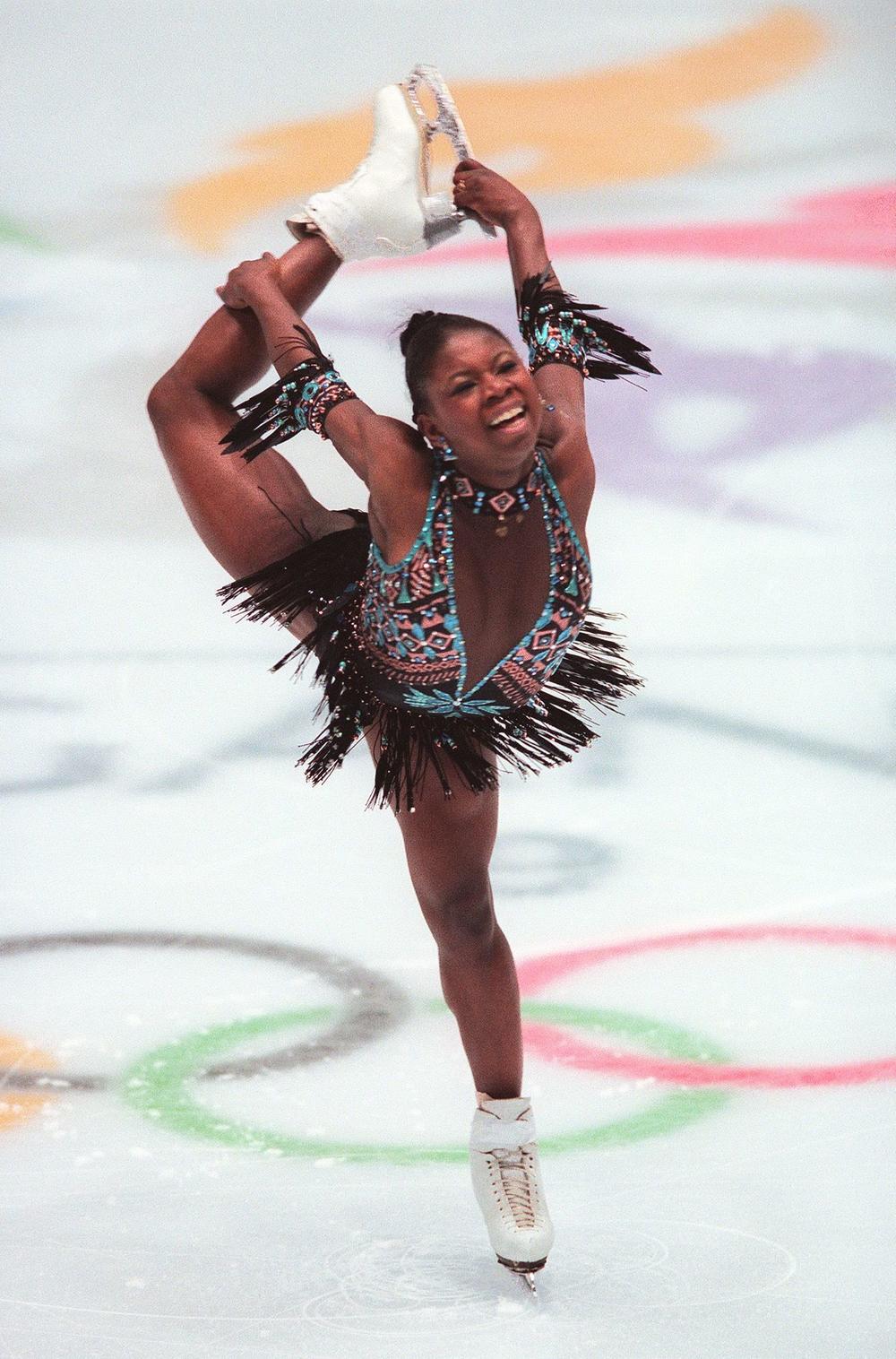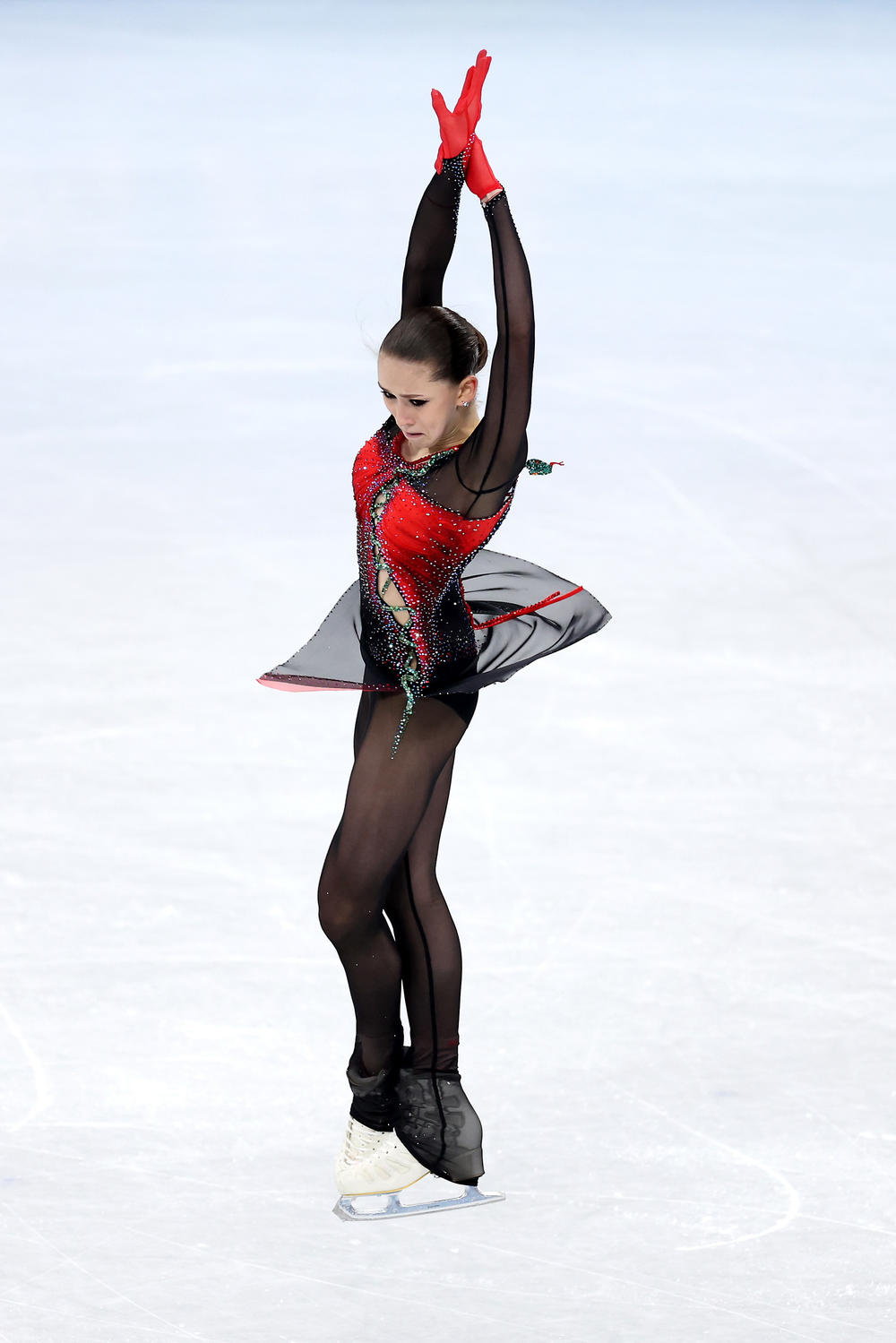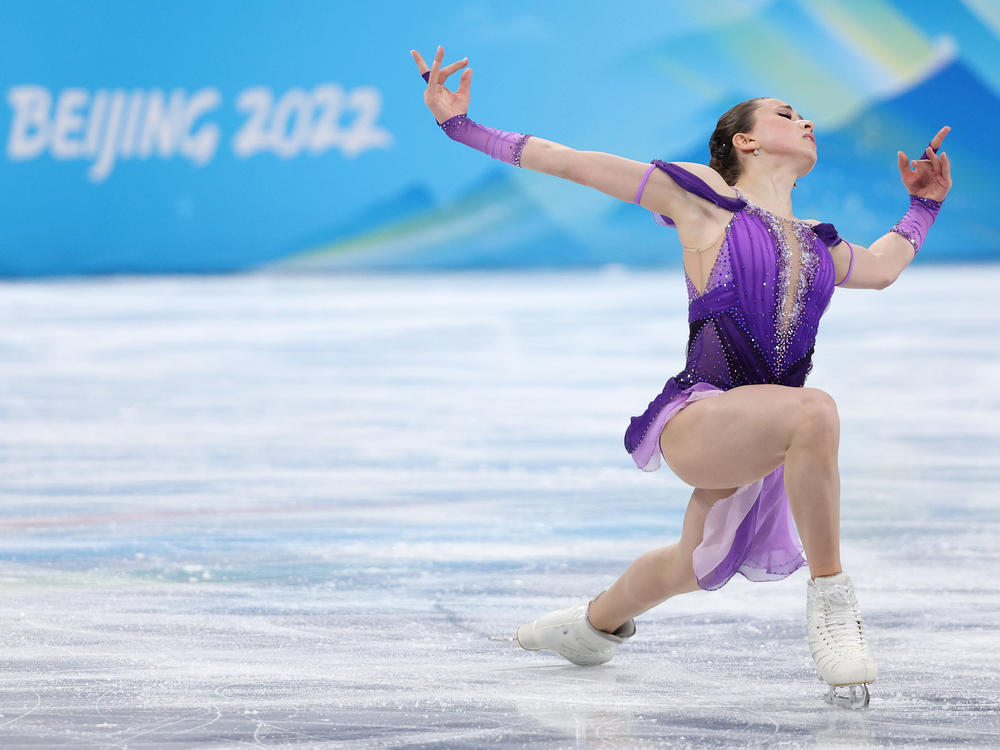Section Branding
Header Content
In the midst of scandal, 3 Russian figure skaters hope to elevate their sport
Primary Content
BEIJING — A controversial Olympic women's figure skating competition ends Thursday in Beijing.
15-year-old Russian star Kamila Valieva is in first place going into the individual free skate. Her positive test for a banned drug before the Games has clouded the event. And it's turned attention away from what experts say could be a landmark moment in the evolution of jumping in the sport.
Commonplace quads
When American Nathan Chen won the Olympic men's individual figure skating competition last week, he landed five quadruple rotation jumps cleanly.
And predictably.
"Now it is so commonplace," said former U.S. men's Olympic skater Adam Rippon.
It's been building to this since around 2010, and the emergence of Canadian skater Patrick Chan.
"[Chan] really was the first guy to have both consistent quads and incredibly good skating," said figure skating analyst Jackie Wong, from the website Rocker Skating. "That led to this gulf between him and everybody else when he skated cleanly. And so everybody was like, okay, we need to catch up. And that was when, really, in this generation of skaters, the quad became a thing for men's skating."
Lagging behind, but trying to break through
The women lagged behind, though not for lack of trying.
In the 1990's, French skater Surya Bonaly made the quad her personal mission.
Bonaly says she landed plenty of quads in practice, but never in competition.
Over the next 30 years, others would try, but also come up short.
Flash forward to last September, when 17-year-old Alexandra Trusova showed in an event in Russia, how far female skaters have come.
Trusova has been landing quads in competition since she was 13. Nicknamed "The Quad Queen," she's in fourth place heading into Thursday's Olympic free skate. It's expected she'll try five quads again. Valieva, who became the first female to land a quad in Olympic competition, in the team event in Beijing, is expected to try three. And second place Anna Shcherbakova, at least one.
If successful, this Russian trio could do for the women's sport what Patrick Chan did for the men.
Quickness is the thing
So how did skating get here, with the quad commonplace for men and a reality for the women?
Rippon, who helps coach U.S. women's national champion Mariah Bell, says skaters have developed in recent years so they now value quickness over the brute strength that got them high in the air for the big jumps.
"You even look at the body types," Rippon said. "In the early 2000's, or late 1990's, the men had broader shoulders. They were more built. It was about having strength to get these jumps high up into the air and to make them as high and as beautiful as possible. And that's slowly transitioned into, now the body type is very long and very lean. And that's more geared toward somebody who can be as quick as possible. So it doesn't matter how high I get, it matters how quickly I can rotate around. And that's what's really served these skaters is being as quick as possible."
To achieve this, Rippon says common training methods, even for kids under 10, now include a device that spins the skater on a disk and then lifts them into the air in a harness.
"They'll raise the skater up and they've been sort of launched into the air," Rippon said, "and they can hold these rotations in the air not just for two, three, four rotations but for 30 rotations up in the air. And it's to really feel so secure in that rotation position. It's almost like a technique used by astronauts so that they feel like they can keep their focus and balance, no matter how quickly they're spinning."
Rippon conjures images of Broadway to further describe the elevated skaters.
"Just think like you're watching Peter Pan [flying] in a harness. Now just think of every young kid who wants to skate is now Peter Pan in a harness."
A hard time trusting
Peter Pan famously proclaimed he never wanted to grow up. And for female skaters especially, growing up and experiencing puberty is not conducive to snapping off strings of quad jumps. The three Russian teenagers in fact have elevated the discussion, and even debate, about age limits and what's too young and what is fair in a sport where quads are becoming the only ticket to medals and fame.
Of course Valieva's positive test for a banned drug also has shrouded the women's event in controversy. Although her case won't be heard until after the Olympics, and she hasn't been hit with a doping violation, the New York Times reports a drug test sample provided by Valieva contained three substances used to help the heart, including one that's banned by world anti-doping authorities.
As a result, many in the skating world are having a hard time trusting what they see on the ice at these Games.
"I think the sadness for the sport is, it feels not real," Rippon said. "It makes us question everything and we don't want to do that."
That includes questioning the dazzling jumps by Valieva, Trusova and Shcherbakova, who all train under the same successful and controversial coach, Eteri Tutberidze.
There's no consensus the banned medication found in Valieva's system is a performance-enhancer in sport. Whatever is revealed, Rippon doesn't think the scandal or the questions will interrupt the evolution of the quad in women's skating.
"I think because just being able to see a female doing the quadruple jump," Rippon said, "has inspired a lot of women to start working on it. Urgently. And I think all across the world there are girls who now go okay, when I grow up, I want to be able to do a triple axel and a quadruple jump. And I think because they don't put a ceiling on what they think is possible, anything is possible."
The jumping frontier
With the quad jump becoming more prevalent, what are the limits? Is a quint jump out there on the not too distant horizon? Even more?
"I think there have been theoretical studies done on whether or not a quintuple jump is possible," Jackie Wong said, "and it seems like it is. If you look at some of the quads that are being done these days, and the way the efficiency of rotation has been happening, you see that there is potentially room for a fifth rotation. Six? Definitely not. Maybe I'll look back at [these comments] 20 years from now and be like, what were you talking about? But, I think the human body maxes out at five. At least with the technology of the skates we have now and, y'know, you can only jump so high and you can only rotate so fast. And five, I think, is the edge of the possible."
Rippon dreams a bit larger.
"When I started skating," the 32-year-old Rippon said, "if you told me somebody would do Nathan Chen's [Olympic gold medal-winning] program, it sounds like a joke. It sounds like a complete joke from another universe and y'know, it's not. We watched it be done almost completely flawlessly and effortlessly. So really anything is possible. I think as time goes by, technique will continue to evolve and the equipment will also continue to evolve. It's going to be very interesting to see how far the skaters can take it. Y'know, leave it to young athletes."
Thursday, three young Russian athletes, surrounded by controversy, will try to show how far skaters can take it, right now.
Copyright 2022 NPR. To see more, visit https://www.npr.org.




